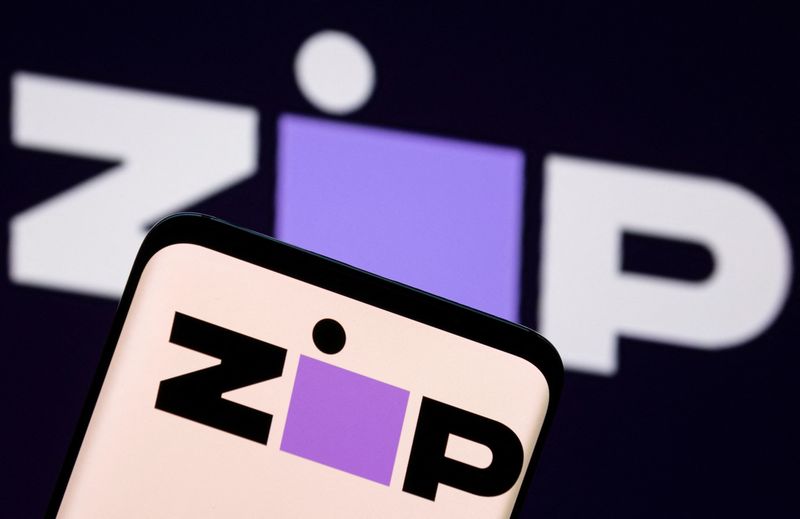 © Reuters. FILE PHOTO: Zip logo is seen on a smartphone in front of displayed same logo in this illustration taken January 25, 2022. REUTERS/Dado Ruvic/Illustration
© Reuters. FILE PHOTO: Zip logo is seen on a smartphone in front of displayed same logo in this illustration taken January 25, 2022. REUTERS/Dado Ruvic/Illustration(Reuters) – Australian payments firm Zip Co on Monday forecast a bigger half-year loss than analysts’ expectation, citing lower consumer spending in the United States as fiscal stimulus money dries up.
The downbeat forecast sent the stock of Australia’s biggest standalone buy-now-pay-later (BNPL) company down nearly 7% to its lowest since May 2020.
The BNPL sector in Australia, which saw a meteoric rise during the pandemic as customers thronged to online shopping and preferred alternate sources of credit to pay for purchases, is going through a rapid consolidation.
Zip said it would undertake a series of cost-saving measures to narrow its losses, but did not provide further details.
Bad debts were at 2.6% of transaction volumes for the first half ended Dec. 31, higher than RBC’s estimate. Zip attributed this to its expansion into “less mature” markets, and less stimulus in the United States.
The company has been rapidly expanding into new markets over the past year, acquiring and investing in companies in Europe, Asia and the Middle East. Last month, it said it was in talks to buy smaller Australian peer Sezzle.
RBC said Zip’s expansion strategy was likely to result in higher operating costs going forward.
Zip said it expected half-year earnings before income taxes, depreciation and amortization to be a loss of A$108.1 million ($108.10 million), compared to RBC’s estimate of a A$39.7 million loss.
($1 = $1.0000)
Fusion Media or anyone involved with Fusion Media will not accept any liability for loss or damage as a result of reliance on the information including data, quotes, charts and buy/sell signals contained within this website. Please be fully informed regarding the risks and costs associated with trading the financial markets, it is one of the riskiest investment forms possible.

